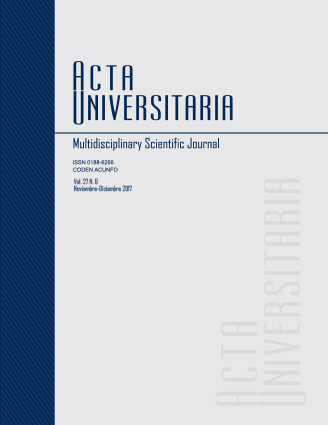Susceptibility of Xanthomonas campestris pv. vesicatoria isolates to Streptomyces and bioactive extracts of Ganoderma
Published 2018-02-26
Keywords
- Ganoderma lucidum,
- Streptomyces lydicus,
- biocontrol.
- Ganoderma lucidum,
- Streptomyces lydicus,
- biocontrol
How to Cite
Abstract
In the present study, 10 bacterial isolates from pepper (Capsicum annuum L.) were identified as Xanthomonas campestris pv. vesicatoria; their pathogenicity in greenhouse was determined, and their susceptibility to Streptomyces lydicus and bioactive extracts of Ganoderma lucidum was evaluated in in vitro and greenhouse conditions, using in each bioassay a completely randomized design. All isolates were infective with incidence of 100%, and variations in their severity. Although all isolates were susceptible to biological treatments, the bioactive extracts were superior with 100% inhibition in vitro, as well as in the reduction of foliar infection and bacterial population in greenhouse. An strong correlation between bacterial population and foliar infection was detected in plants infected only with the pathogen (r = 0.9139**); in plants treated additionally with the biologics, a weak correlation was observed in each, suggesting their beneficial effect on the suppression of X. campestris pv. vesicatoria.

